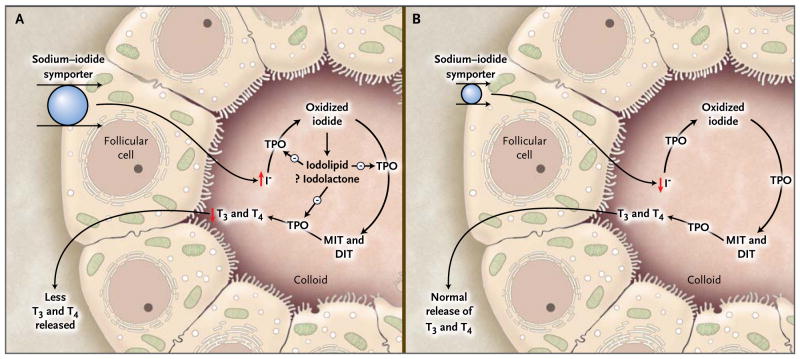Figure 1. The Wolff–Chaikoff Effect.
Panel A shows a proposed mechanism of the acute Wolff–Chaikoff effect. During the first day of iodine exposure, the sodium–iodide symporter transports the excess iodine into the thyroid, resulting in transient inhibition of thyroid peroxidase (TPO) and a decrease in thyroid hormone synthesis. Panel B shows the mechanism that turns off the acute Wolff–Chaikoff effect: a dramatic decrease in sodium–iodide symporter expression results in decreased iodine transport and the subsequent resumption of thyroid hormone synthesis. DIT denotes diiodotyrosine, I− iodide, MIT monoiodotyrosine, T3 triiodothyronine, and T4 thyroxine.

